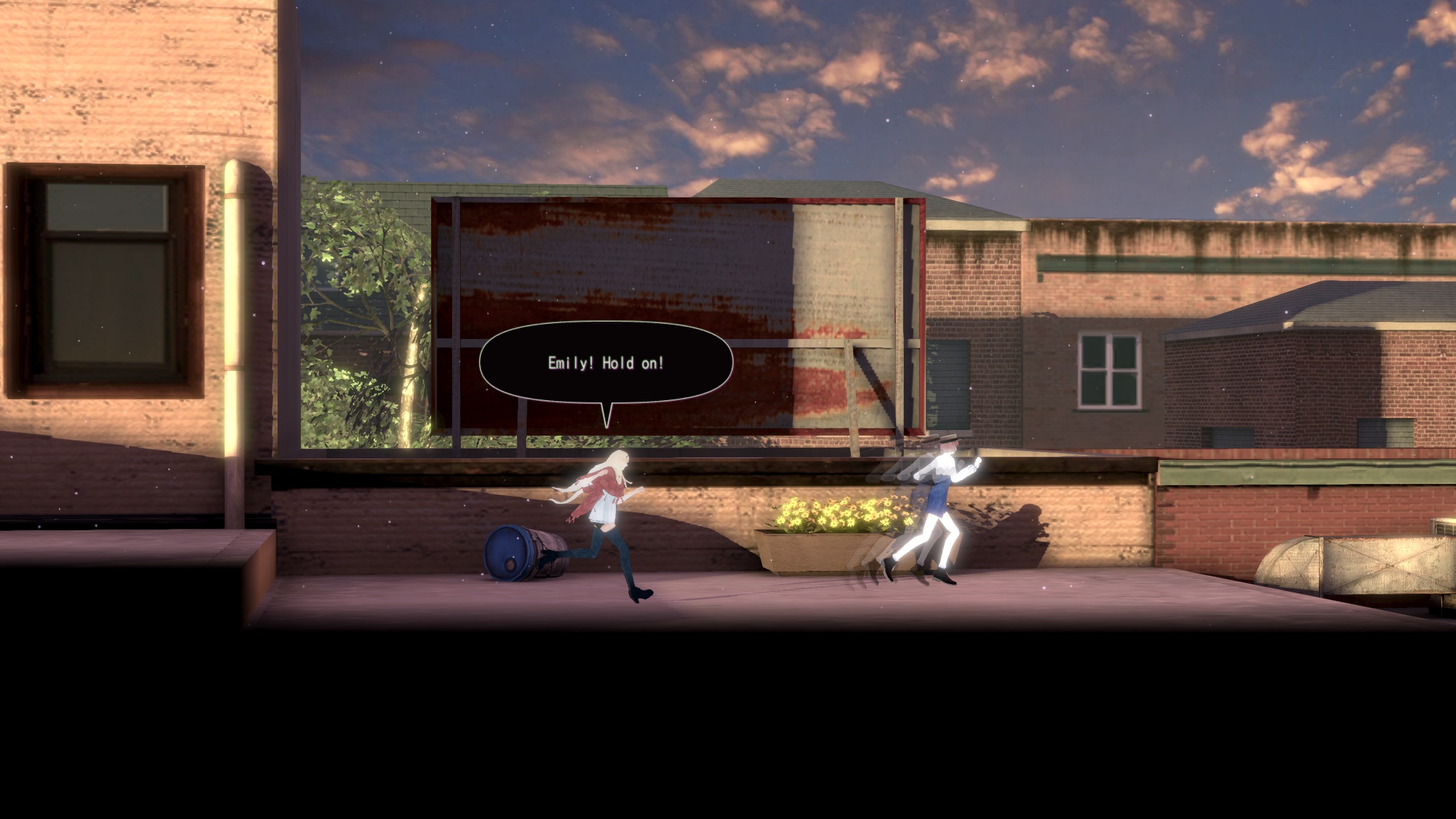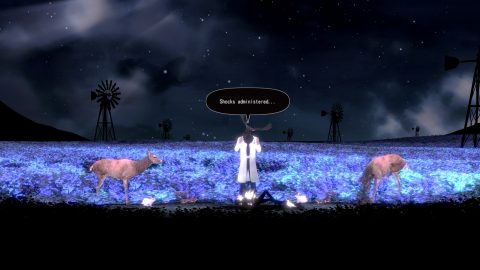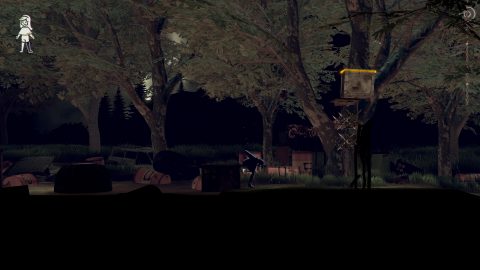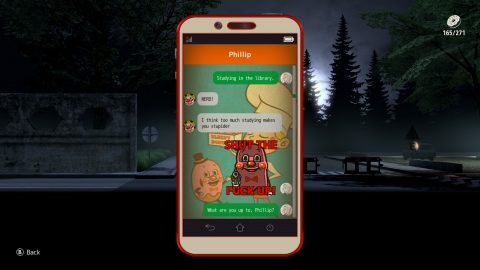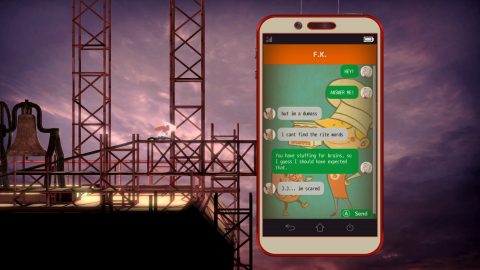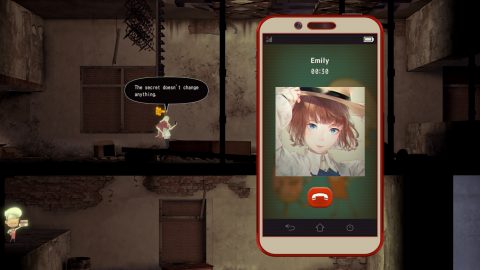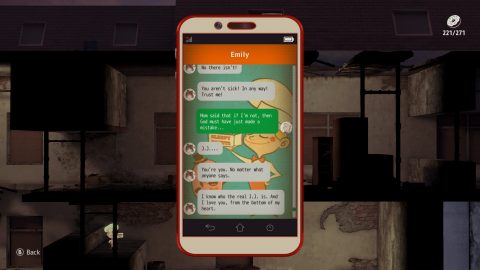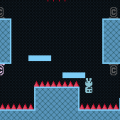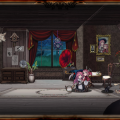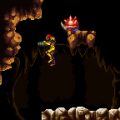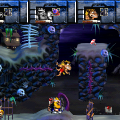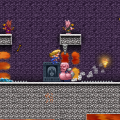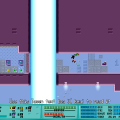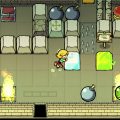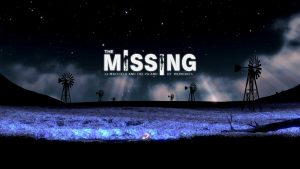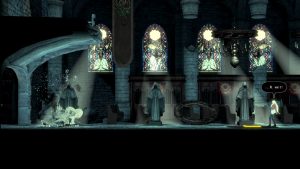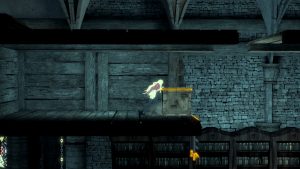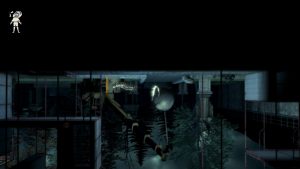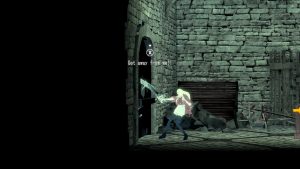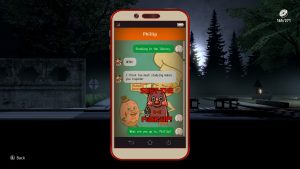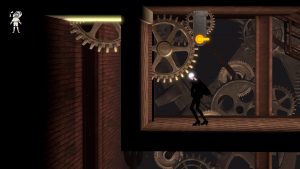Hidetaka Suehiro, who goes by the nickname SWERY, is a game director with a small history of obscure games and cult hits behind him. They include games such as the spy-themed Spy Fiction, the open world survival horror comedy Deadly Premonition, and the point-and-click adventure D4: Dark Dreams Don’t Die. His games tend to combine original ideas with eccentricity, bizarre humor and a love of Americana, the TV show Twin Peaks, and rural nature.
The MISSING: J.J. Macfield and the Island of Memories continues that tradition. Within the first 15 minutes, players are left with a major feeling of “WTF?!”, which compels them further.
But let’s start with the beginning.
The game starts with Jackie Jameson Macfield, a 19-year-old college student, at a dock overlooking an island, while she carries a plush toy. As players choose “New Game,” J.J. calls out to her friend Emily Thompson, and the two hop into a nearby boat. We then cut to a narrator describing their destination, Memoria Island, an island that has the power to awaken people’s memories.
Once there, J.J. and Emily have a friendly, and slightly flirtatious chat. Then, while sleeping, J.J. suddenly wakes up in the rain and finds Emily missing. As players leave the campsite, it isn’t long before they encounter a mysterious human-like creature with very long hair standing over a corpse, one which looks… identical to J.J., before the creature then chases Emily. The corpse soon disappears via hands coming out of the ground and pulling it under.
After solving a few basic puzzles involving pushing and pulling boxes, J.J. finds herself struck by lightning and set on fire. A deer with the body of a human doctor runs over to J.J. along with a bunch of animals, and begins saying seemingly random medical things. J.J. soon regenerates her body into its normal, repaired form, but her plush toy, a chimera named F.K., was not so lucky: it is broken into pieces and scattered to the wind. J.J. breaks down into tears as the game’s theme song plays.
Shortly after, it gets weirder. J.J. receives a text message on her phone from F.K. Not quite believing that her plush toy is speaking to her after being completely obliterated, she responds angrily. Right after the phone call, J.J. falls into some spikes, which cut off her arms and legs, reducing her down to only a severed head.
Yes, that’s right. Are you following this so far?
As a severed head, players can move and jump, and when they feel like it, regenerate their body at will by holding a button. And that ties into the core mechanic of the game: self-harm and regeneration.
See, J.J. is required to cut off her arms and legs frequently, or even cut herself down to a severed head, in order to solve puzzles. She can cut off an arm, then pick up the severed arm and throw it. She can use the lower half of her body as a counterweight while crawling with the upper half. And in addition to severing body parts, she can also set herself on fire to light up the darkness or burn things, and she can snap her neck in order to reverse gravity.
While the self-harm is the major element of the gameplay, the major element of the story is J.J.’s cell phone. It is how J.J. interacts with the vast majority of characters in the game. Either through text messages from the past which provide backstory, text messages from the present (always from F.K.), or phone calls. The text message conversations are often peppered with humorous (and crude) stickers similar to the phone app LINE, many containing heavy profanity.
Let’s take a look at these characters. Most of them are never seen in-game, but are instead represented by a tiny phone icon or their LINE stickers.
J.J. Macfield
J.J. is 19 years old, and is a student at Moosefoot College in the American state of Maine, where she intends to major in industrial design. She appears to have a crush on her best friend, Emily. She is an only child of a single mother, and appears to be financially well off.
Emily Thompson
J.J.’s best friend and only confidant. Emily and J.J. tell each other everything, and have a very close relationship. J.J. encounters Emily in person multiple times in the game as well.
J.J.’s Mom
J.J.’s mom is very active in J.J.’s life, to the point of being nosy and suspicious. She frequently texts J.J. about how to get a good job, how to move up the economic ladder, and the importance of being successful. She’s also opinionated, old-fashioned and conservative.
Lily
One of J.J.’s classmates. Lily is the self-proclaimed leader and only member of a “fan club” for J.J. She avoids the use of profanity, and her conversations are generally light.
Phillip
A wealthy, arrogant student who constantly asks J.J. for help, either with homework or with improving his social status by watching his (possibly YouTube) videos, but never offers to do anything in return. He loves to brag, and his stickers reflect that.
Abby
A rocker girl who’s also into sports. J.J. admires her for her bravery, standing up for people who are being bullied or mocked, and her unwillingness to let people walk all over her.
Professor Derek Goodman
The professor of J.J.’s industrial design class. He seems to see a kindred spirit in J.J., and tells her many personal stories about his own life, and his fandoms.
The basic way the game plays out, is that J.J. proceeds from left to right, or bottom to top in some cases, through a connected world not clearly divided into discrete levels. J.J.’s basic movements come from the Prince of Persia school of realistic character movements – running as fast as a real person, not being able to jump especially high, and so on, all while featuring smooth, lifelike animation. It feels like controlling a real person, despite the anime art style.
As players progress, they keep encountering situations which require them to self-harm in order to move on. At first, these are simple, like cutting off an arm so that it can be picked up and thrown at a box to knock it down. But later, they become very elaborate. To use one complex example, in one area, J.J. must throw coal into a train’s boiler to make it start a small fire, touch that fire to ignite herself, and then travel to the right, making sure not to fall, and avoiding water, all so she can reach and burn up a vine that is preventing the train from moving.
This all sounds very morbid, and its portrayal is actually censored. When J.J. is in pain, her screams are soft, as if the voice actress was screaming loudly but the recording volume was turned down. When J.J. is injured, she appears as a silhouette, and her blood, innards and bones are white.
What’s more, there are oddly specific rules to how the self-harm works. If J.J.’s neck is snapped, gravity is reversed. But if she becomes only a severed head, gravity returns to normal, perhaps because it’s impossible to have a snapped neck when you do not have a neck. If J.J. is on fire and she falls, her legs break off. And J.J. can die if her head is destroyed.
From time to time, a monster named the Hairshrieker shows up and chases J.J. These chase sequences are fast, initially intense, and are among the few moments where J.J. can die. Escaping the Hairshrieker requires good reflexes and a good grasp of J.J.’s movement, and there will be many deaths along the way. Once the player has memorized what to do, however, the intensity of these chases tends to die out in subsequent playthroughs.
As J.J. proceeds through the game, she receives text messages from the past, from her mom and from Emily, at key moments. If you want only the most important story details, these are the ones to read, and the others can be safely ignored. These text messages explain what’s going on in the story, and are vital to understanding the game’s ending.
Not only does she receive these text messages, but she also receives the occasional cryptic phone call from Emily. Emily’s phone calls are done using the Twin Peaks-esque “backwards voice” effect, and contain what appear to be references to suicide, and having a “secret.” J.J. is understandably concerned when she receives these.
There are also text messages not from the past, but the present. J.J.’s plush toy F.K. seems to be contacting her from beyond the grave, and these exchanges tend to show J.J. at her angriest and most vulgar, as she takes her stresses out on this poor unwitting plush toy, while he responds with childlike innocence and confusion.
There are also 271 collectible donuts scattered throughout the game. Most are solo, while others come in sets of 10, collected by touching a statue of a mascot for the fictional Sleepy Donuts company that J.J apparently is infatuated with (her phone background and stickers feature its mascots). Collecting donuts earns players text messages from J.J.’s classmates and professor, along with alternate outfits, and gallery art. Finding all the donuts requires a deep understanding of the game’s bizarre rules.
One thing The MISSING does very well, is that it milks its gameplay mechanics for all the ideas it can get out of them, and then just when it’s running out of ideas, it begins winding down. At least, the gameplay does. The story picks up even more. And if you haven’t been reading the text messages from Emily and J.J.’s mom, you’ll probably be lost. Even if you have been reading them, the subtle “between the lines” hints may be difficult to figure out.
And so when players encounter Emily seemingly having committed suicide by hanging herself, followed by J.J. attempting the same, with an ambiguous suicide note, it can seem to come out of nowhere. SPOILERS BELOW
The MISSING has an excellent presentation, especially for its budget. As mentioned before, J.J.’s animation is very smooth and realistic. The graphics are a bit of a mixed bag, with some rather blurry textures, but it’s forgivable considering the game’s low-mid budget nature. There are literally only four voice actors, and they give mostly good performances. The use of text messages for most of the story allows the developers to avoid having to use too many actors. All songs are performed with real instruments, and two have lyrics that are relevant to the story’s themes. The majority of the game has no music, using only ambient noise to set the scene, which sets the atmosphere excellently. Even some of the songs come from a jukebox rather than being used as background music. Amusingly, players can press a button to make J.J. call out for Emily (similar to Luigi calling out for Mario in Luigi’s Mansion), or say different things depending on her current mood.
With all that said, this is still a SWERY game, and that means glitches! There are major game-breaking glitches, so be prepared to hit “retry chapter” on J.J.’s phone. Glitches include things like a scale that refuses to move all the way, items being dropped in the background where they can’t be picked up, being unable to answer the phone or move J.J. if J.J. tries to climb a ledge while the phone is going off, and the game outright crashing. This isn’t a big surprise to those who had to deal with Deadly Premonition’s many glitches, but it’s still a shame. Luckily, these glitches are easier to deal with, thanks to the “retry chapter” and chapter select features. There’s also some more action-oriented or platforming-oriented areas that are perhaps harder than they should be, due to the game’s movement mechanics being a bit stiff or janky.
Also, being a SWERY game, there’s references to his other work – namely, Deadly Premonition. J.J.’s plushie F.K. is named after the famous “F.K. in the coffee” meme spawned by that game, and at one point J.J. even directly uses one of that game’s more memetastic quotes.
The MISSING is a short game at roughly 5-7 hours on average, but it’s an experience that sticks with you long after you’ve beaten it. It’s also a compelling argument for the idea that video games can be art on par with any meaningful movie or novel, and an example of what can be accomplished on an indie budget. And, an example of how a seemingly innocuous game can surprisingly tackle a hard topic when you least suspect it, by effectively pulling a bait-and-switch.
